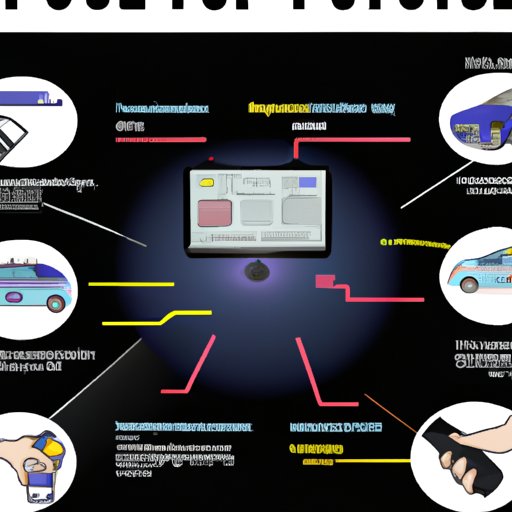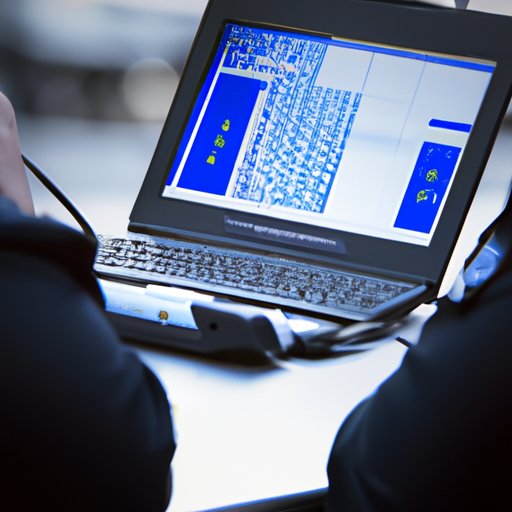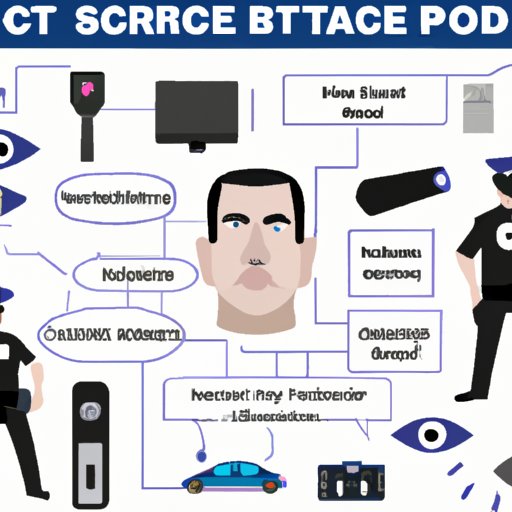
Introduction: Overview of Police Technology
As crime rates have risen in recent years, so too has the demand for innovative technologies in law enforcement. Police officers now rely on a wide range of tools and gadgets to help them respond quickly and effectively to criminal activity. From automated license plate recognition (ALPR) systems to computer aided dispatch (CAD) systems, the latest technology can help police officers better serve their communities.
Definition and Examples of Technology Used by Police
Technology is defined as any tool or device that helps people complete tasks more efficiently and accurately. In the context of law enforcement, technology refers to the various tools and devices used by police officers to monitor, investigate, and apprehend criminals. Some examples of technology used by police include body cameras, automated license plate recognition (ALPR) systems, computer aided dispatch (CAD) systems, and facial recognition software.

Benefits of Technology in Law Enforcement
Law enforcement technology can provide several benefits to police officers and the public. It can help police officers stay safe on the job, improve their investigative capabilities, and increase transparency and trust between law enforcement and the community. Additionally, law enforcement technology can reduce response times and lead to faster resolution of cases.
How Technology Enhances Police Performance
The use of advanced technology by police officers can enhance their performance in several ways. First, technology can help police officers better monitor their surroundings. For example, with the help of body cameras and ALPR systems, police officers can more easily identify suspicious vehicles and capture evidence at the scene of a crime.
Second, technology can improve the communication systems used by police officers. For instance, CAD systems enable police officers to quickly and accurately send out alerts and notifications to other officers while they are on patrol. This can help police officers coordinate their efforts more effectively and respond to emergency situations more quickly.
Finally, technology can increase the accuracy and efficiency of investigations. With the help of facial recognition software, police officers can quickly identify suspects and gather information about their past activities. Similarly, data mining tools can help police officers analyze large amounts of data and uncover patterns or connections that may otherwise go unnoticed.
Examining the Impact of Technology on Policing
The use of technology by police officers can have a positive impact on both officer safety and the public’s perception of law enforcement. For starters, body cameras can provide a record of interactions between police officers and members of the public. This can help protect officers from false accusations and encourage citizens to cooperate with police. Additionally, body cameras can be used to review police conduct and ensure that officers are following proper procedures.
Moreover, technology can help increase transparency and accountability within law enforcement agencies. For example, CAD systems allow police departments to track response times and ensure that officers are responding to calls in a timely manner. Similarly, ALPR systems can be used to generate detailed reports on police activity, which can be used to identify potential issues and develop solutions.
Finally, technology can help reduce response times and improve the efficiency of police operations. With the help of CAD systems, police officers can quickly locate and respond to emergency situations. Additionally, ALPR systems can help police officers quickly identify suspicious vehicles and apprehend suspects.
The Use of High-Tech Tools by Police Officers
In addition to the traditional tools and devices used by police officers, there are several high-tech tools that can help enhance their performance. Automated license plate recognition (ALPR) systems, for example, are designed to scan license plates and instantly identify vehicles that are stolen or involved in criminal activity. This can help police officers quickly locate suspects and apprehend them before they can commit further crimes.
Body cameras are another important tool used by police officers. Body cameras are designed to provide an audio and video record of interactions between police officers and members of the public. This can help protect both parties in the event of a dispute and ensure that police officers are following proper procedures.
Finally, computer aided dispatch (CAD) systems are used by police departments to manage their resources more effectively. CAD systems allow police officers to quickly locate and respond to emergency situations. Additionally, CAD systems can help police departments track response times and ensure that officers are responding to calls in a timely manner.

Investigating the Role of Technology in Modern Police Work
In addition to the traditional tools and devices used by police officers, there are several high-tech tools that are increasingly being used in modern police work. For example, predictive policing is a type of technology that uses historical data to predict where and when crimes are likely to occur. By using predictive policing, police officers can focus their efforts on areas of high risk and intervene before crimes take place.
Data mining is another tool that is becoming increasingly popular among police departments. Data mining tools can help police officers analyze large amounts of data and uncover patterns or connections that may otherwise go unnoticed. For example, data mining can help police officers identify links between suspects and criminal networks.
Finally, facial recognition software is becoming an important tool for police officers. Facial recognition software can be used to quickly identify suspects and gather information about their past activities. Additionally, facial recognition software can be used to compare photos of suspects to databases of known criminals.
Conclusion
The use of technology by police officers is becoming more and more prevalent in today’s society. From body cameras to facial recognition software, the latest technology can help police officers better serve their communities and protect themselves. Additionally, technology can help police officers increase transparency and accountability and reduce response times. As technology continues to evolve, it is likely that police officers will continue to rely on new tools and devices to enhance their performance.
Summary of Findings
In summary, police officers rely on a wide range of tools and devices to help them respond quickly and effectively to criminal activity. From body cameras to facial recognition software, the use of technology by police officers can help enhance their performance and protect both officers and the public. Additionally, technology can help increase transparency and accountability and reduce response times. As technology continues to evolve, it is likely that police officers will continue to rely on new tools and devices to enhance their performance.
Final Thoughts
The use of technology by police officers is essential in today’s world. From body cameras to predictive policing, the latest technology can help police officers better serve their communities and protect themselves. Additionally, technology can help increase transparency and accountability and reduce response times. As technology continues to evolve, it is likely that police officers will continue to rely on new tools and devices to enhance their performance.
(Note: Is this article not meeting your expectations? Do you have knowledge or insights to share? Unlock new opportunities and expand your reach by joining our authors team. Click Registration to join us and share your expertise with our readers.)
